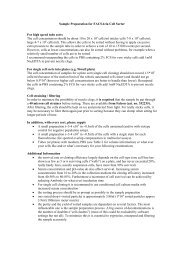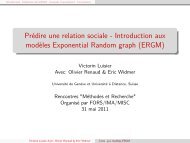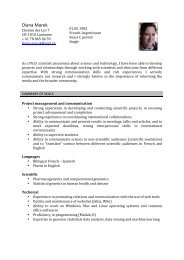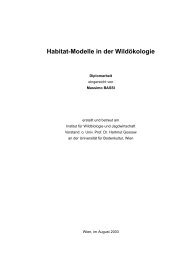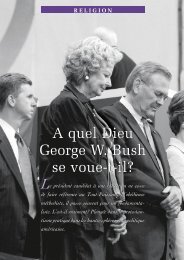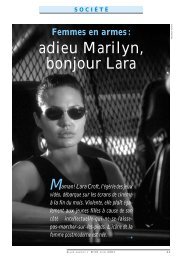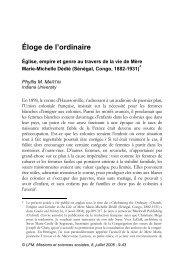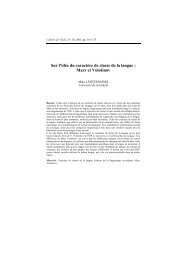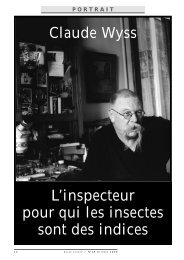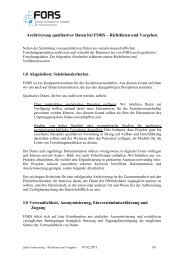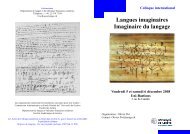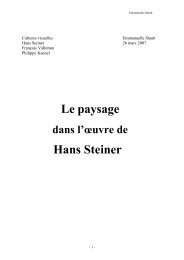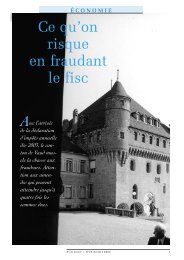conference programme book - European Survey Research ...
conference programme book - European Survey Research ...
conference programme book - European Survey Research ...
Create successful ePaper yourself
Turn your PDF publications into a flip-book with our unique Google optimized e-Paper software.
THURSDAY 21 JULY 1573.37.2 The role of visual and aural smuli in producing mode effects on answers to survey quesonsP. Lynn 2 , S. Hope 3 , A. Jäckle 2 , P. Campanelli 1 , G. Nicolaas 3 , A. Nandi 21 The <strong>Survey</strong> Coach, United Kingdom; 2 University of Essex, United Kingdom; 3 Naonal Centre for Social <strong>Research</strong>- NatCen, United KingdomJäckle et al (2011, this session) argue that differences in the characteriscs of the queson administraonmethod are a cause of mode effects on measurement. One such characterisc is the communicaon channelsby which quesons and answers are transmied between researcher/interviewer and respondent. For anyparcular survey queson, a combinaon of channels may be used. There are three pieces of informaonto be communicated – the queson, the response opons, and the answer – and there are mulple possiblechannels for each. A respondent may perceive a survey queson either visually or aurally, but the responseopons need not be perceived through the same channel (e.g. if an interviewer reads the queson but therespondent has to read the response opons on a card)...3.37.3 The role of the interviewer in producing mode effects: results from a mixed modes experimentS. Hope 2 , P. Campanelli 1 , G. Nicolaas 2 , P. Lynn 3 , A. Jäckle 3 , A. Nandi 31 The <strong>Survey</strong> Coach, United Kingdom; 2 Naonal Centre for Social <strong>Research</strong> - NatCen, United Kingdom; 3 Universityof Essex, United KingdomIn this presentaon we focus on the role of the interviewer in causing mode effects, contrasng modes inwhich an interviewer is used (face-to-face and telephone) with a mode without an interviewer (web). Otherdifferences between modes, such as aural versus visual transmission of informaon, are held constant wherepossible.3.37.4 Is it a good idea to opmise queson format for mode of data collecon? Results from a mixedmodes experimentG. Nicolaas 2 , P. Campanelli 1 , S. Hope 2 , A. Jäckle 3 , P. Lynn 3 , A. Nandi 31 The <strong>Survey</strong> Coach, United Kingdom; 2 Naonal Centre for Social <strong>Research</strong> - NatCen, United Kingdom; 3 Universityof Essex, United KingdomIt is common pracce for survey designers to change how quesons are asked and answered to beer fit thesurvey mode. For example, the visual presentaon of response lists in self-compleon modes and face-to-faceinterviews with show cards allows the survey designer to use long lists. However, such lists are not feasiblein telephone interviews relying solely on verbal communicaon, and this oen leads to the use of radicallydifferent queson formats between modes.3.38 Innovaons in survey sampling ITo be held on July 21, 2011 from: 16:00 to 17:30, in room 414.Coordinated by:• Seppo Laaksonen - University of Helsinki, Finland• Siegfried Gabler - GESIS - Leibniz Instute for the Social Sciences, Germany3.38.1 Generalized calibraon with latent variablesA. Matei 11 Instute of Stascs, University of Neuchatel; Instute of Pedagogical <strong>Research</strong> and Documentao, SwitzerlandNonresponse is defined as the failure to provide the required informaon by a unit selected in a sample. Dealingwith nonresponse is an important topic, since nonresponse is present almost in all surveys, and can bias



